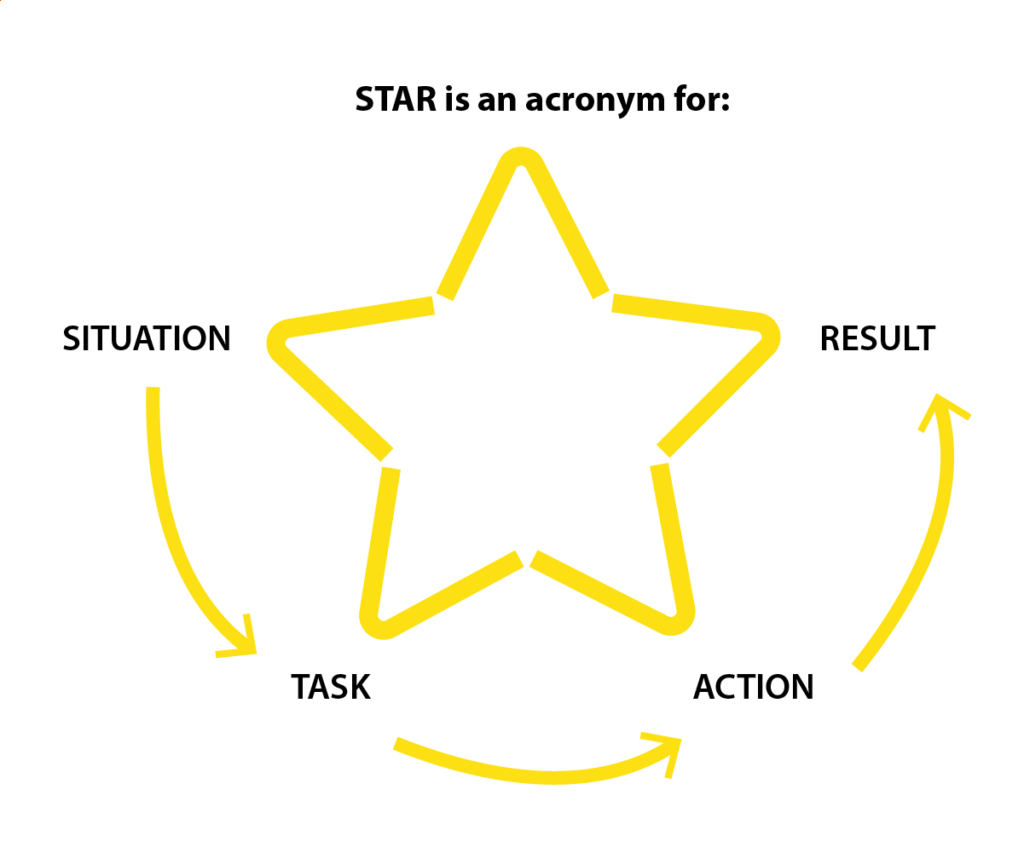
You’ve probably already been to a few job interviews. And, you are pretty familiar with the process and potential questions.
But, even though there are some common interview questions you have heard dozens of times, you can never be sure whether your answer is good enough. After all, recruiters are the only ones who know how to rate the answers.
What if we told you that you can now know how recruiters rate interview answers?
And, even better… What if you could structure your response so that you give the recruiter the exact answer they’re looking for?
Keep reading to find out how recruiters rate interviews and how you can use this to your advantage!
STAR is an interview method that recruiters and hiring managers use to evaluate how candidates overcome challenges and what they do when faced with certain situations in the workplace.

When applying the STAR method, recruiters mostly focus on asking behavioral interview questions, which are more open-ended rather than “yes-or-no” questions. These questions usually require the candidate to share stories or examples from their previous jobs.
Even though there is no way to know the interview questions in advance, it is possible to prepare a few general but well-structured answers. Most behavioral interviews focus on different work-related challenges that demonstrate critical thinking, problem-solving, leadership skills, conflict resolution, and performance under pressure.
Keep reading to find out more about how you can use the STAR method to structure and answer behavioral interview questions!
Recruiters use the STAR method to take candidates through a structured interview process. However, you can use this same method to create an easy-to-follow story with a clear conflict and resolution. Here’s what each part of the technique means:
When asked a behavioral question, you should first set the stage for the story. Start by sharing the context around the situation or a challenge you faced.
You should spend the least amount of time on this part, as interviewers are more interested in the actions you took and the results you got. Make sure to identify two or three most important pieces of information necessary to give the interviewer enough context about the situation.
Example: “Advertising revenue was falling off for my college newspaper, The Review, and large numbers of long-term advertisers were not renewing contracts.”
Once you provide enough context, explain your responsibility in that situation. Make sure to discuss your goals, achievements, and accomplishments instead of just listing the responsibilities.
Similarly to the previous section, consider describing one or two points that best illustrate the task you needed to complete.
Example: “My role was to generate new ideas, materials, and incentives that would result in at least a 15% increase in advertisers from the year before.”
Action is the most important part of your answer. You should provide an in-depth description for this section, as this is what indicates whether you’re fit for the role or not. Identify and discuss a few of the most impactful steps you took to successfully resolve the situation you described earlier.
The most common mistake candidates make when answering this question is that they use the word “we” to describe how they achieved a certain goal. Even though workplace challenges are most often addressed by a team, it is important that you focus on what you did in the situation.
Example: “I designed a new promotional packet to go with the rate sheet and compared the benefits of The Review circulation with other ad media in the area. I also set up a special training session for the account executives with a School of Business Administration professor who discussed competitive selling strategies.”
When you finish describing your actions, focus on the outcome. Decide what are the most impressive accomplishments that resulted from your actions and discuss them in detail.
Quantify your success or provide concrete examples of the effects of your efforts if possible. You can also use this opportunity to discuss what you learned, how you grew, and why this experience made you a stronger employee.
Example: “We signed contracts with 15 former advertisers for daily ads and five for special supplements. We increased our new advertisers by 20 percent over the same period last year.”
Here are a few examples of common behavioral questions you might be asked during an interview:
These are some of the most common behavioral interview questions. While the phrasing may vary from interview to interview, the general intent of the question typically remains the same.
Recruiters and hiring managers often ask behavioral interview questions to determine whether you are the right fit for a job. By using the STAR strategy, you can make sure you’re fully addressing the interviewer’s question while also demonstrating how you were able to overcome previous challenges.
